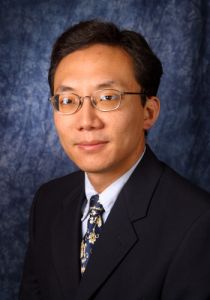Pioneers of the Ocean's Depths
Alumnus Helps Establish Nation’s First Subsea Engineering Program at UH

Before subsea engineering became a pioneering academic program at the University of Houston, it started as an idea between Randy Wester (’89) and a coworker in 2010. Wester, who worked in FMC Technologies’ oil and gas division, had been chatting with colleague Mike Robinson in Houston. Robinson grew up in the United Kingdom and began his career with the company there. While visiting with Wester, Robinson observed that, unlike the U.K., there were no subsea engineering programs at universities in the United States. He wondered if that would change.
Wester graduated from the University of Houston in 1989 with a bachelor’s degree in mechanical engineering. He believed Cullen College of Engineering faculty could help start a subsea engineering program at the University. He remembers, “I approached mechanical engineering Professor Matthew Franchek who approached then-Dean Joseph Tedesco, and they were gung-ho, like, ‘Let’s go for it.'"
Subsea engineering is a branch of the oil and gas industry that provides the technology and tools needed to access these resources from the ocean’s depths while minimizing environmental impacts.
Wester credited Franchek for helping start the subsea engineering program at UH. “He has a very entrepreneurial spirit about him,” Wester said. “If he hadn’t taken the ball and ran with it up the chain to the dean, it (the program) would have died on the vine right there. He was very instrumental in getting the program up and running.”
Franchek would later become the founding director of the UH Subsea Engineering Program.
By 2011, roughly a year after Wester’s conversation with his coworker, the nation’s first academic subsea engineering program began accepting students at UH. “It started out as a certificate program and then ultimately developed into a master’s degree program,” Wester related. “Later, we added more courses to the program and recruited people to be professors for the classes. Many of them initially came from my company. The courses were taught primarily by people who worked in the industry.”
During UH Subsea Engineering’s first year, it received the World Oil Award for the industry's best outreach program. Today, it is comprised of classroom lectures and online courses, including courses at the University of Houston at Katy and hands-on software lessons for subsea systems design.
Sun Li, current director of subsea engineering and a Department of Mechanical Engineering professor, said the subsea engineering field is vital to meeting today’s energy needs. “While there’s a global push toward renewable energy, the reality is that we cannot live without oil and gas at the moment, and we are becoming more reliant on oil and gas produced from deep and ultra-deep waters because many of the world’s oil and gas supplies are located underwater.'"

Sun Li, current director of Subsea Engineering
Sun Li, current director of Subsea Engineering
Wester added that it has been gratifying to witness subsea engineering’s growth over the years. “I was very pleased that there was support for it. We started gauging oil and gas operators and other supply companies like mine to those operators. There was broad-based support for it. We created an advisory board with representatives from 10-15 different companies. It wouldn’t have happened if there hadn’t been broad support from the industry.”
